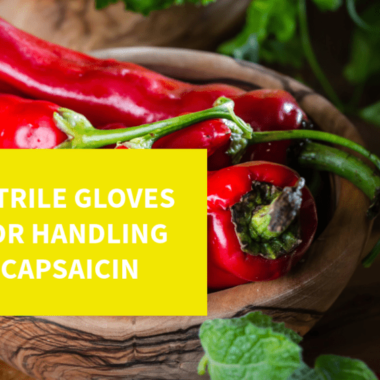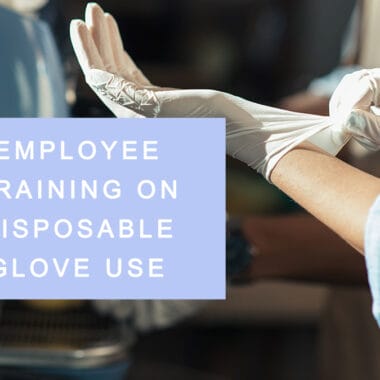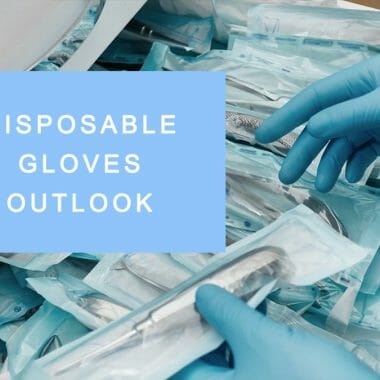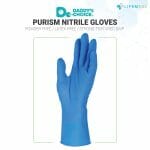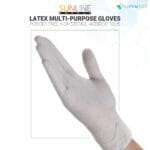Disposable gloves are an essential product of the healthcare industry. They help keep physicians, nurses, laboratory technicians, and other staff safe from viruses and bloodborne pathogens.
A critical shortage of nitrile gloves emerged during the pandemic. Strangely, it has persisted much longer than anyone anticipated. It has driven latex and nitrile glove prices through the roof.
This article goes over the reasons for that and offers some light at the end of the tunnel. The information below can help you better understand what is going on with delays in disposable glove manufacturing. It also will help you know what to expect in the months to come so that you can plan accordingly.
What Are Nitrile Gloves?
There are many different types of disposable medical gloves made from various materials and with distinct designs. Understanding the differences between them, and the advantages they offer is critical. It can help you determine which is best for your medical environment.
Vinyl Gloves
Vinyl gloves come from a petroleum-based film, the same used in PVC. They are very inexpensive to manufacture. This helped make them the go-to option for hospitals and clinics through most of the 19th century.
However, vinyl gloves are the least durable type of disposable glove. When stretched, they become porous, causing their protective capabilities to break down.
For this reason, the medical industry has moved away from vinyl gloves. The only exceptions are for uses where there is little or no danger of contamination (i.e., applications where you want to keep your hands dry or clean).
Latex Gloves
Due to inadequacies in vinyl gloves, latex gloves rose to prominence in the 1980s and 1990s. They are very effective at protecting against bloodborne pathogens. For this reason, their increased use in medical settings corresponded to the advent of the HIV/AIDS epidemic.
One disadvantage of latex is that some people are allergic to the material. This prevalence has led to increased demand for latex-free alternatives.
Nitrile Gloves
In response to increases in allergic reactions to latex, nitrile gloves came onto the scene in the 1990s as an alternative. Nitrile is a type of synthetic rubber. It comes from butadiene (an organic gas condensed into a liquid) and acrylonitrile (a synthetic compound in the production of plastics).
Nitrile gloves are durable and unsusceptible to most biological and chemical hazards. They also are the most puncture-resistant glove available. For these reasons, they are the most widely-used glove in the healthcare industry.
Reasons for Disposable Glove Scarcity and Increased Prices
Healthcare professionals use latex and nitrile gloves to keep them safe from microorganisms. This helps reduce the spread of illnesses or infections. Everyone from surgeons to nurses and general practitioners use them on a regular basis.
There are several moving parts that initiated and have contributed to the worsening of the latex and nitrile glove shortage. These can be condensed to an issue of supply and demand––an increase in global demand during COVID while manufacturers reached maximum output. Here is a breakdown of that dynamic.
Increased Need During COVID
The need for nitrile gloves spiked during the COVID-19 pandemic as hospitalizations skyrocketed. This is one factor that initiated the disposable glove shortage, from which we have yet to recover.
COVID led to an increase in clinic and hospital visits. It also meant a beefing up of personal protective equipment (PPE). Medical staff were taking every precaution to ensure protection against the spread of the virus.
Increased General Clinic and Hospital Visitation
While COVID kicked off this crisis, it is not the only factor responsible for the glove shortage and subsequent price increase. For decades, there has been a steady uptick in the number of people visiting clinics and hospitals.
This is due to both population growth and innovations in medicine that help people live longer. It also means an expanding geriatric population in the United States, who are more likely to need medical care than younger people.
Limited Access to Rubber
A final variable in the glove shortage has to do with limitations on materials. Rubber trees are the main source of material for both latex and nitrile gloves.
They only grow in warm, tropical climates. Almost all of the rubber used in medical gloves come from either China or Malaysia.
The lack of alternatives in available manufacturers has exacerbated problems associated with disposable glove shortages. It means that customers cannot shop around at different companies for a better price tag. They are essentially forced to pay the asking price or go without the product (which is not an option in most clinical or laboratory settings).
Factories that supply rubber to glove manufacturers have been working to increase capacity. However, this relief is not immediate. There is much speculation about when this lag will be assuaged, but the hope is that new rubber production could have an impact as early as late 2023.
Disposable Glove Alternatives
It is worth mentioning that the disposable glove shortage has prompted clinics to look for alternatives. These include reusable, multi-use gloves or glove shells that cut down on the need for disposal.
There are downsides to these, however. One is cost––you can expect them to be much more expensive than disposable gloves. Another is increased labor in handling and caring for reusable gloves.
There are other things clinics can do to help mitigate issues with the shortage. The Centers for Disease Control and Prevention has laid out some guidelines that can help you navigate this crisis.
Learn More About the Nitrile Glove Shortage (and Solutions)
Now that you understand the causes of the nitrile glove shortage, you can know what to expect going forward. While you cannot control the disposable glove market, you can be informed as possible to plan for the future.
LIFEMEDZ was founded with the mission to make medical supplies affordable for anyone who needs them. We want to make sure all healthcare staff have access to essential items without worrying about costs. Reach out to us today to learn more about how we leverage our relationships with manufacturers to make that happen.


